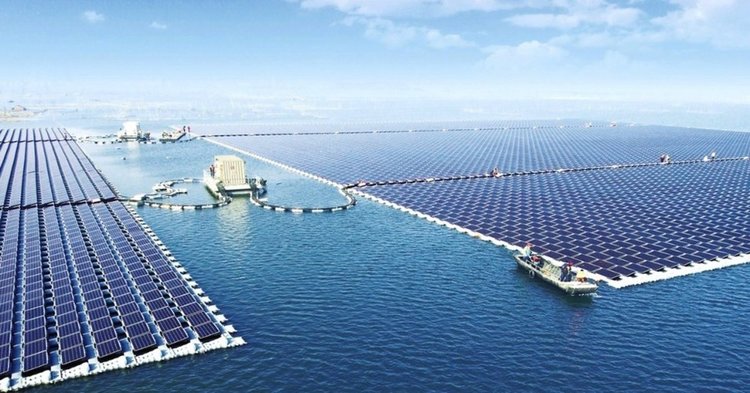Here’s a pro tip for those who are looking to increase the solar energy output but have already used up all of the lands for agricultural purposes or for housing; make use of the water. We are saying this because that is exactly what Japan has done with its first floating solar plants. The very first floating solar plant was built in Aichi Prefecture in central Honshu.

The country’s inland lakes and reservoirs have a total of seventy-three of the world’s largest 100 floating solar plants. The country also enjoys half of those plants’ 246 megawatts of solar power. Hyogo Prefecture in southern Honshu has around 40,000 lakes and houses almost half of the floating solar capacity of the world’s 100 largest plants. A lot of plants are small in terms of scale but do allow the region to jumpstart the shift to distributed local power generation.

The largest Japanese floating solar plant is situated at the Yamakura Dam at Ichihara in Chiba Prefecture. It spans a total of 18 hectares and provides power to about 5,000 homes while saving more than 8,000 tons of CO2 per year. Floating solar plants are actually a very good option for Asia. That is because the land is scarce, but a lot of hydroelectric dams offer the existing transmission infrastructure. China has linked the world’s biggest floating solar plant at Anhui – capable of generating about 78,000 megawatts during the first year, the equivalent of powering 21,000 homes.

The floating solar plant technology is comparatively new. The very first patents were taken out in 2008, and according to its supporters, the floating solar plant is about 16% more effective as opposed to the land-based systems. Not only do they free up the already scarce land but can also help with the prevention of algae growth.

During 2014 and 2018, the world’s floating solar output grew 100-fold. Soon the floating solar plants will be able to provide more power than the traditional land-based systems. However, the critics of the system have said that it might have negative effects on marine ecosystems because it blocks sunlight. There’s also the issue of damage that bad weather can cause to these floating solar plants. What do you think of this technology, though? Do let us know!


